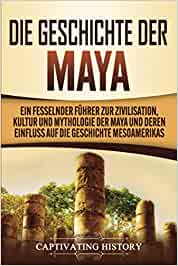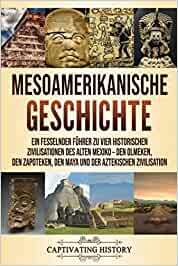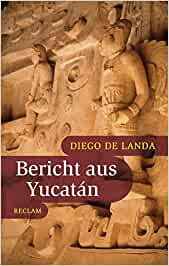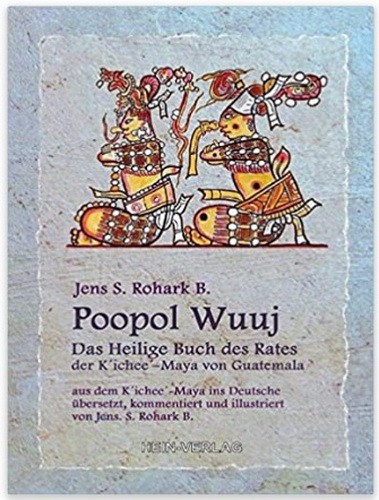History of the Maya
Between Myths and Knowledge: An Introduction
History of the Maya: An Introduction
Native to Mesoamerica (Greek for Central America), they are famous for magnificent buildings. In their knowledge, they were far ahead of other peoples. And yet they remain a mystery. Much of their culture was lost, blamed on the Spanish invasion of Mexico and later Central America.
It is an introduction to the history of the Maya and we will gradually explain each aspect in further in-depth articles. We hope to whet your appetite for Mexico as a travel destination and the Mayan regions of the Riviera Maya and the Yucatan Peninsula. We look forward to receiving feedback from our readers.
Would you like to experience the Maya at first hand? Take advantage of our wide range of excursions on the Riviera Maya.
-

Private Cozumel Jeep Tour
$110.00 (from) -

Cozumel Highlights
$140.00 (from) -

Tacos & Bar Hopping Tour Cozumel
$100.00 (from) -
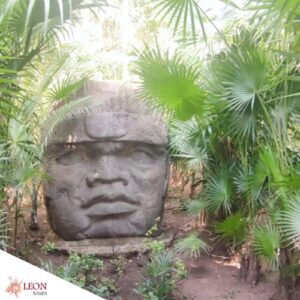
Animal Sanctuary & Island Tour
$120.00 -

ATV & Beach Break Tour
$130.00 (from) -

Private Excursion Chichen Itza
$190.00 (from) -

Ek Balam & Rio Lagartos
$220.00 (from) -
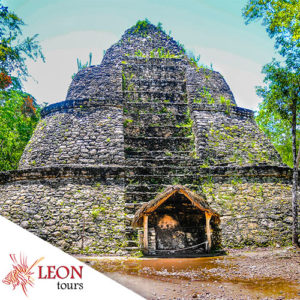
Excursion Coba, Tulum, Cenote
$170.00 (from)
Where do the Maya come from?

Mayan History: Where did the people of America come from
The most widely accepted theory is that the first humans came from Asia to America about 12,000 years ago via the so-called Bering Strait. When the ice masses decreased at the end of the last ice age, the strait between Siberia and Alaska was probably passable on foot.
The first people in America are called Paleo-Indians. They followed mammoth or bison herds and probably came from Russia to Alaska because of the animals. There they slowly spread over the American continent. As early as 9,000 B.C., the Mayan region of Chiapas, Belize, Guatemala and the Yucatan Peninsula was inhabited by hunter-gatherers.
What is Mesoamerica?

Cultivation of corn
Religion with many gods
The popular ball game
Importance of the jaguar
Intellectual development: writing, astronomy, mathematics, architecture and calendar
Trade, exchange of goods
Human sacrifice
Mesoamerica was not only home to the Maya, however. Other important cultures such as the Olmec, Zapotec, Aztec are also found in this region. They influenced each other, traded and developed their cultural elements such as religion.
When did the Mayan civilization begin?
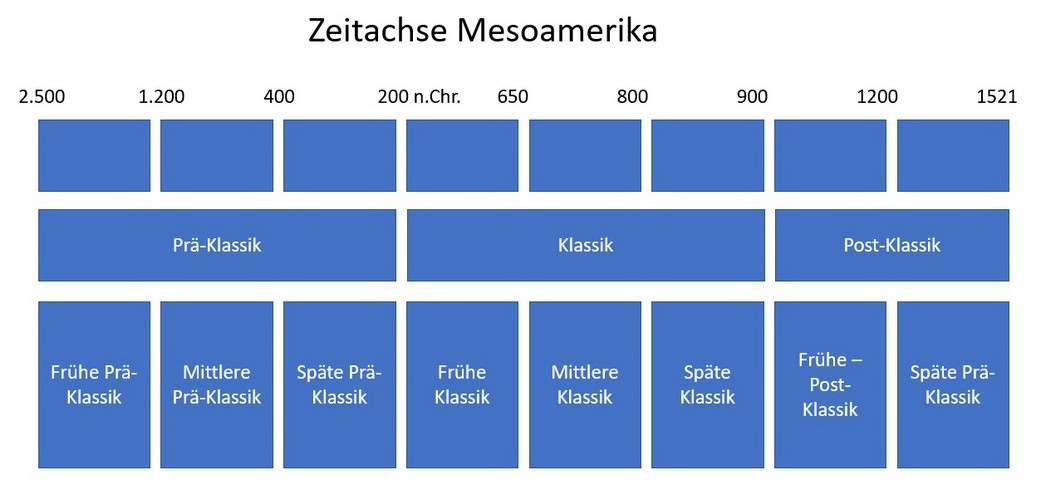
As early as about 2,500 BC, the oldest culture in Central America developed, that of the Olmecs. They are known for their huge round heads made of stone. The Olmecs populated the Mexican state of Tabasco on the Gulf of Mexico and laid the foundation for the further development of Mesoamerica.

How did the Mayan civilization develop during the Classical period?
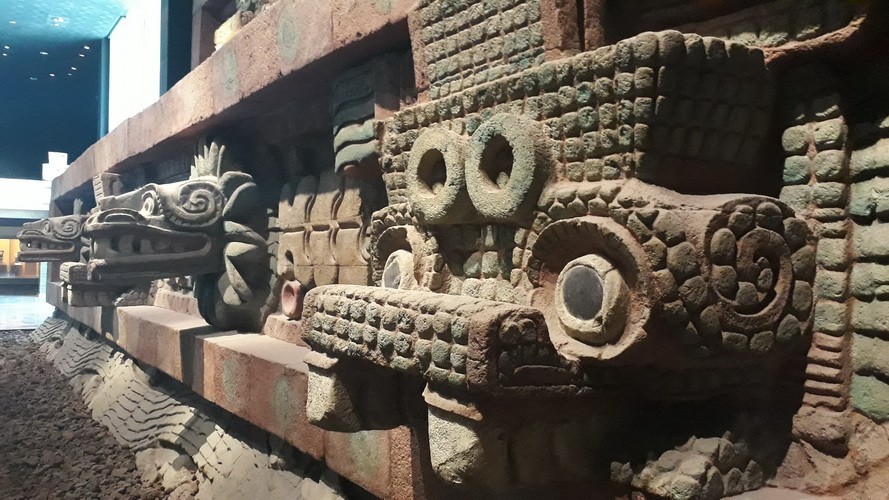
Thus, around 800 AD, important Mayan centers in Guatemala, Belize, Honduras and El Salvador were abandoned. Why, that is not scientifically clear. There may have been a great drought. However, it is also possible that the many wars severely weakened individual centers.
What happened to the Maya in the Late Classic period?
In the Late Classic period, large Mayan cities such as Chizen Itza, Uxmal and later Mayapan were built on the Yucatan Peninsula. The era was characterized by competition among themselves and the emergence and decline of great centers. When Chizen Itza was taken by the Toltecs, the last great power to emerge was the League of Mayapan, which lasted until 1441. Weakened by wars and conflicts, little of the former power was then left.
When the Spanish arrived in Mexico in 1511, they did not have a concentrated Mayan force against them. Rather, individual tribes existed that were easily defeated. The great opponent of the Spaniards therefore waited until later with the Aztecs, who fought united in a strong army under one ruler (Moctezuma) and lost in the end. Thus also the history of Mesoamerica ended.
The Maya Land

Mayan history: map Mayan territory and archaeological sites, Source INAH
The Maya land extends in Mexico over five federal states: Chiapas, Quintana Roo, Campeche, Tabasco and Yucatan. Guatemala, Belize, El Salvador and Honduras are also Maya land. Throughout the area there are impressive Mayan ruins that can be visited.
The Mayan Universe and the Tree of Life
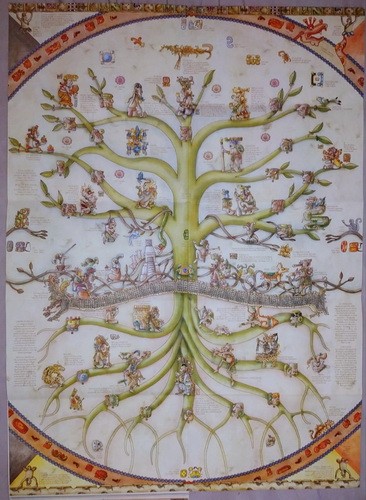
History of the Maya: The Tree of Life La Ceiba, Source INAH
World Above Us (Kaan)
Our world on earth (Kaab)
Underworld (Xibalba)
The Religion of the Maya

Maya History: Sacrifices in the Mayan religion
One can roughly imagine what it meant back then if it didn’t rain for weeks, a child became seriously ill, or even a solar eclipse occurred.
Who were the Mayan gods?
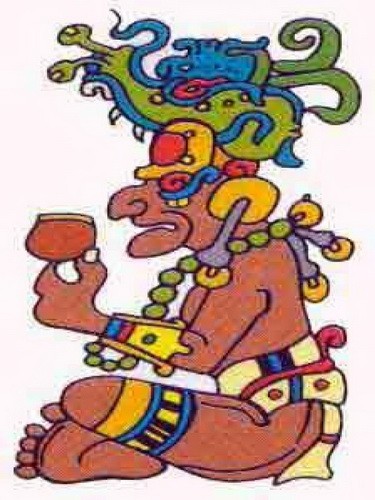
Izamna – God of the Universe, God of the Gods
The Mayan town Izamal was probably named after him.
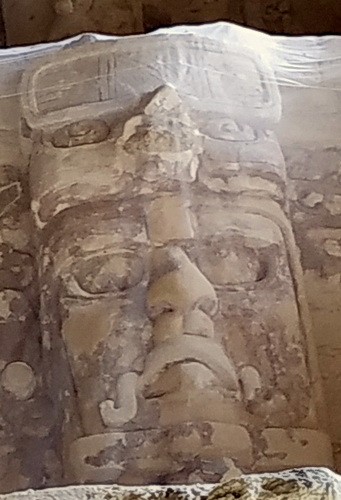
Kinich Ahau – God of the sun, descending god
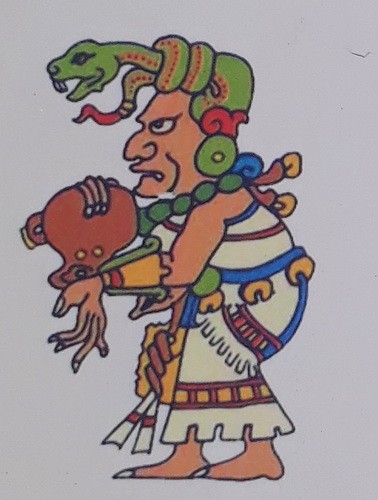
Ix Chel – Goddess of the Moon and Fertility
In the representations she is sometimes seen as a young woman and sometimes as an old goddess. According to Popul Vuh, she flooded the earth when the gods were not satisfied with her creation of humans from wood.
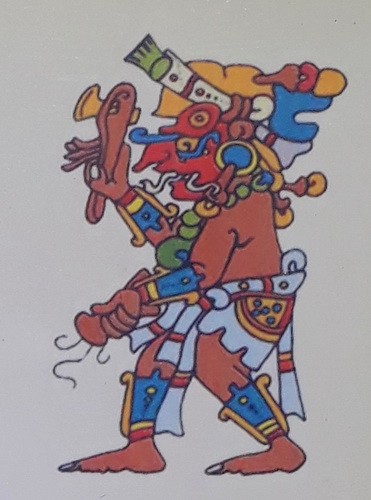
Chaac – Rain God
Chaac is responsible for rain and lightning. He is one of the most powerful gods of all.
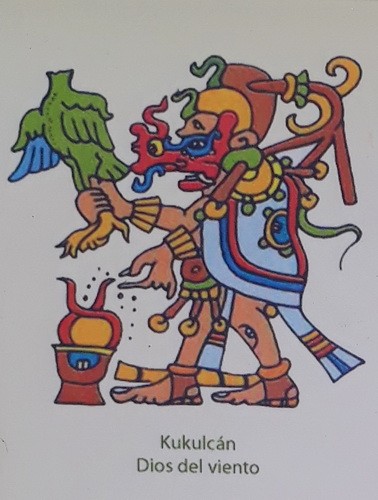
Kukulkan – God of the feathered serpent
The Maya in Chichen Itza believed that Kukulkan comes to earth regularly. In Tulum, the power of the wind is also attributed to Kukulkan.

Yum Kaax – God of wild plants and animals
Before Maya penetrated deep into the wilderness, he had to be asked for permission. As the son of Izamna and Ix Chel, he was quite a young god.

Ah Puch – God of the Underworld
And the more they gave, the more they got back from their gods. So Maya could not just pray for good things to happen. It wasn’t that easy for them, unfortunately; Mayan gods drew their power from sacrifices.
What did the Maya sacrifice to their gods?

The history of the Maya: Offerings
- Offerings: Valuable stones, jewelry, pottery, animal bones.
Self-sacrifices: Lacerations, self added with obsidian knives, piercing the skin or tongue with animal or fish bones, etc.
Human sacrifices: victims were thrown into cenotes, heart taken out or decapitated. Human sacrifices were a crucial part of religions in Mesoamerica and were performed by all cultures. New types of sacrifices continued to emerge, and ideas from other cultures were adopted.Basically, the higher the social status of the victim, the more the sacrifice was worth. Therefore, the peoples of Mesoamerica often waged war to obtain appropriate sacrifices.Each deity had its peculiarities when it came to sacrifices. For example, the cenote at Chichen Itza was found to contain mostly children. The rain god Chaac brings the rain over the earth with lots of little helpers who pour out the rain (kind of like how the Christmas angels help Santa Claus). That is why this deity favored sacrificed children.The ingenuity of the Maya and other peoples of Mesoamerica in terms of human sacrifice will not be shown in detail here.
What role did the priests play in the Mayan world?
Did the Maya believe in life after death?
The dark planes of the underworld could be left out who had left his life in the birth of a child, in the defense in war or in a sacrifice to the gods.
Life was understood as a cycle, time as circular and therefore infinite.
The social organization of Mayan society
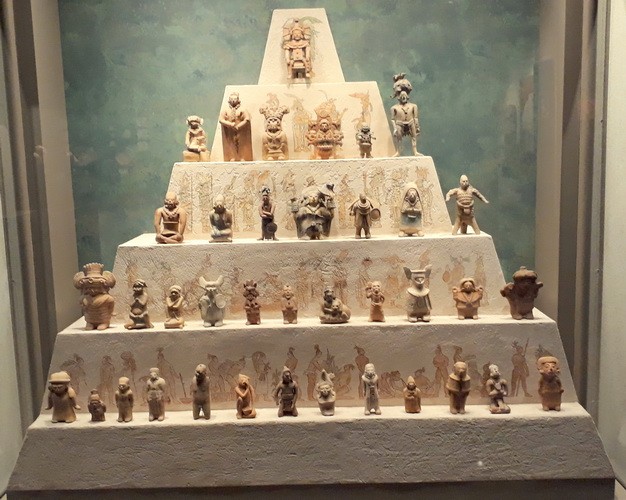
History of the Maya: Their Hierarchy
Halach Uinich: Ruler of a Mayan city
Priest: Responsible for religious ceremonies
Warriors: Strong men and fighters
Scientists, artists and traders
Farmers, hunters and gatherers: Responsible for provisioning, usually under the supervision of a priest
Slaves: Maya knew the concept of slaves. Often enslaved prisoners of war or waged wars to gain slaves (and human sacrifice).
The Maya grew corn, beans, chili peppers, tomatoes, and squash. Cotton and cacao beans were used to trade for other goods.
The writings of the Maya
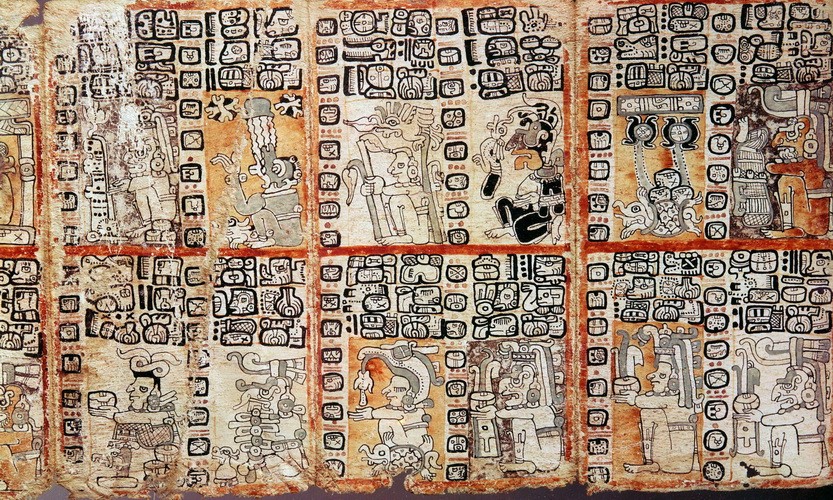
History of the Maya: Dresden Codex, Source
Dresden Codex (in Mayan script)
Peresanius Codex from Paris (in Maya script)
Tro-Cortesanius Codex from Madrid (in Maya script)
Grollier Codex Mexico City (in Maya script)
Chilam Balam from Yucatan (in Latin script)
Popol Vuh (in Latin script)
The Maya had their own script, with about 700 logograms and hyphenators. Mayan writing is considered almost completely deciphered. Although the Maya were able to make paper from bam roots and there were some scripts, only four of them, classified as authentic, are preserved today. They are in museums in Dresden (Dresden National Library), Paris, Madrid and Mexico City.
Why are there so few Mayan writings left?

Mayan History: The Mayan Scripture
Even though it can be assumed that the Maya included the Christian god among their deities, not all of them could or wanted to leave their own powerful deities overnight. The fear of divine wrath was too great, old traditions too deeply rooted.
In order to exorcise “devilish thoughts,” Diego de Landa burned all Mayan works made of combustible material that he could get his hands on July 15, 1562. He justified this act by saying, “We found among them a great number of books with these letters, and because they contained nothing free from superstition and the wiles of the devil, we burned them all, which the Indians deeply regretted and deplored.”
Later, Diego de Landa wrote his report “Relación de las cosas de Yucatán,” today one of the most important sources on Mayan life.
Order here at Amazon: Diego de Landa: Report from Yucatan
The Süddeutsche Zeitung wrote an interesting article about Diego de Landa: How the mysterious Maya script was deciphered
Do the Maya have some kind of Bible?
The bible of the Maya: Popol Vuh
According to the Poppl Vuh, the gods formed the first man from clay, but he was soft and had no movement. The next man was carved from wood, but he had no soul. In the last attempt to create man, the gods used corn. This man made of corn worshipped his creators and thanked them.
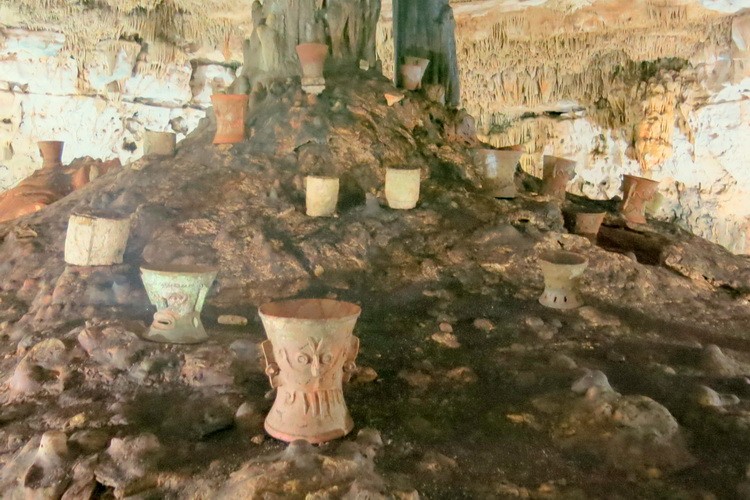
Mayan history: Cave with Mayan offerings
Mayan Pottery
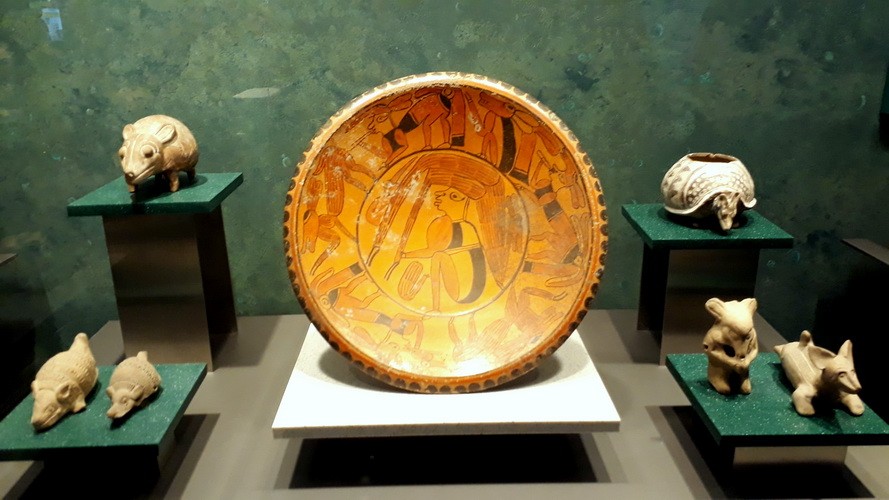
History of the Maya: Ceramic
The clothes of the Maya
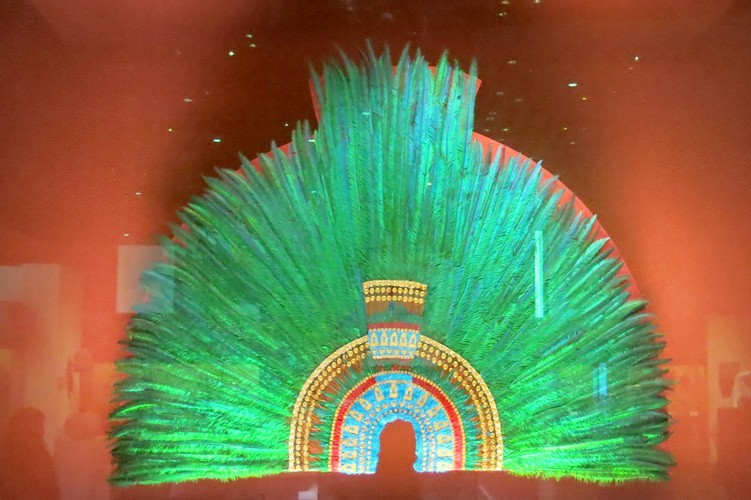
Feather ornaments (here from the Aztec ruler Moctezuma)
Especially important people had impressive feather ornaments and jewelry. Clothing with jaguar elements also represented power and high rank.
Priests were adorned analogous to the gods they represented.
Mayan beauty ideals

Mayan History: Scull deformations
Squinting was also considered beautiful. For this purpose, a stone was attached to a strand of hair, which hung in front of the eyes of small children. Since the children then always looked at this stone, their eyes crossed over time. This ritual has long been practiced by Mayan tribes who still live deep away from civilization.
Rings in the lips, nose and ears, and inlays of jade and stones in the teeth gave men a dangerous appearance. Teeth were also sharpened to a point. Before warlike conflicts and for aesthetic reasons, the ancient Maya painted their bodies.
The Mayan Mathematics

Mayan History: The numvers 1 – 20
One dot represents one, two dots represent two, etc., five is a dash. A dash with one dot represents six, a dot with two dashes represents seven.
The ancient Maya were one of the first peoples to know the concept of the number zero. It is depicted as a shell. Therefore, a 20 is a shell with one dot, a 40 is a shell with two dots, etc.
The Mayan Calendar
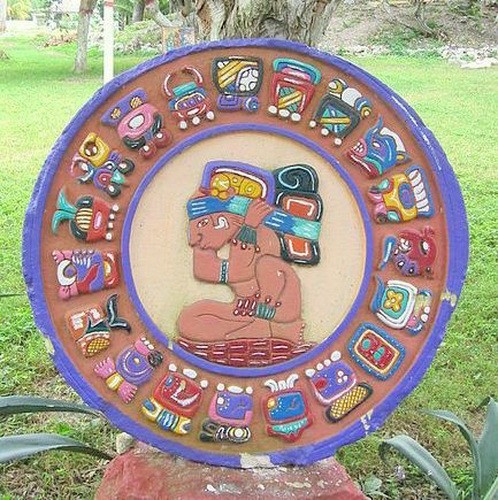
Mayan History: Calendar
The idea of the calendar originally came from the Olmecs. They invented the so-called Tzolkin, a calendar with 260 days, which was used by the Maya to calculate ceremonies and divine events. It consists of 13 months of twenty days.
The Haab, the solar calendar, had 365 days or 18 months of 20 days each and one month of only 5 days (Uayeb). It was used to calculate daily life and agriculture. The long count, the long count, stands for year numbers.
Summary
- The ancient Maya look back on a history of more than two thousand years
- They were far superior in their knowledge to other peoples
- The Maya had a multitude of gods to whom natural powers were assigned
- Mayan society consisted of individual city-states that competed with each other
- The Maya had a system of calendars, numbers, scripts and architecture
- Unfortunately, only a few Mayan writings are preserved today
AFFILIATE LINKS
This article contains product recommendations in the form of affiliate links. If you buy something through these affiliate links, we get a small commission. This does not change the price for you.

Hello, my name is Birgit and I write about interesting topics around vacations in Mexico and traveling on the Yucatan peninsula. I would love to hear from you and I am always happy to receive ideas and recommendations for new articles.
Enjoy reading!!!
Follow us
Interesting blog posts
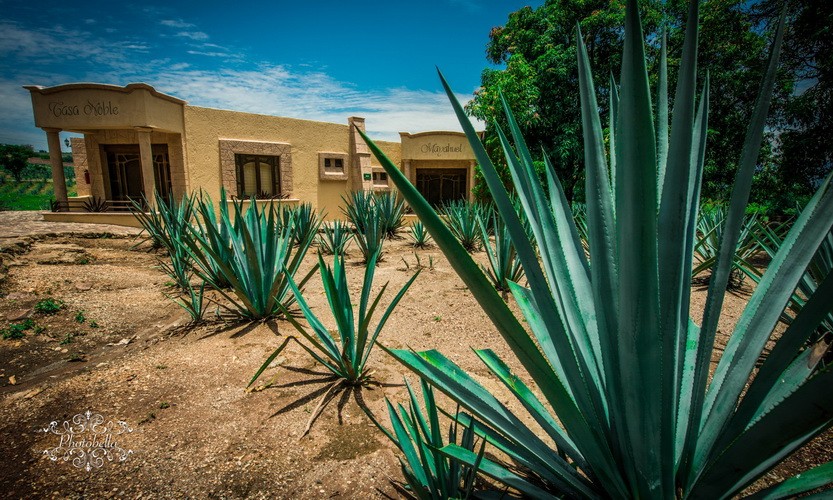
High quality tequila: Recommendations from Mexico
Tequila from Mexico How to recognize High Quality TequilaHigh Quality Tequila: Recommendations from MexicoOne of Mexico’s most popular souvenirs is tequila. It is the most famous form of the Mexican national drink Mezcal and is extracted from the heart of the blue...

Biodegradable sunscreen
Biodegradable Sunscreen Coral ProtectionBiodegradable sunscreen: Coral ProtectionA special consideration for the vacation luggage to Mexico should be the right sunscreen. Because we have to protect our skin against the strong sun and dangerous UV rays. However, the...
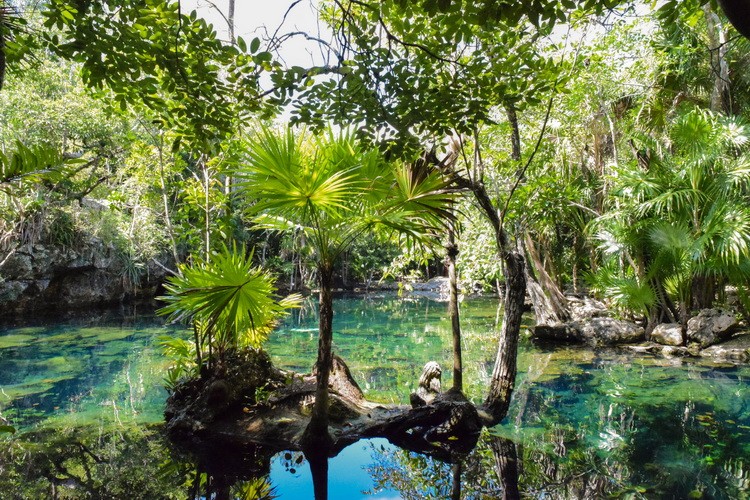
Cenotes in Mexico
Cenotes in Mexico The best Cenotes of the Riviera MayaThe best cenotes in Mexico: Magic OasesLovely, but mystical and full of secrets; the cenotes of the Yucatan Peninsula are a true gift of the nature. Swimming in a cenote, surrounded by jungle and rock formations,...
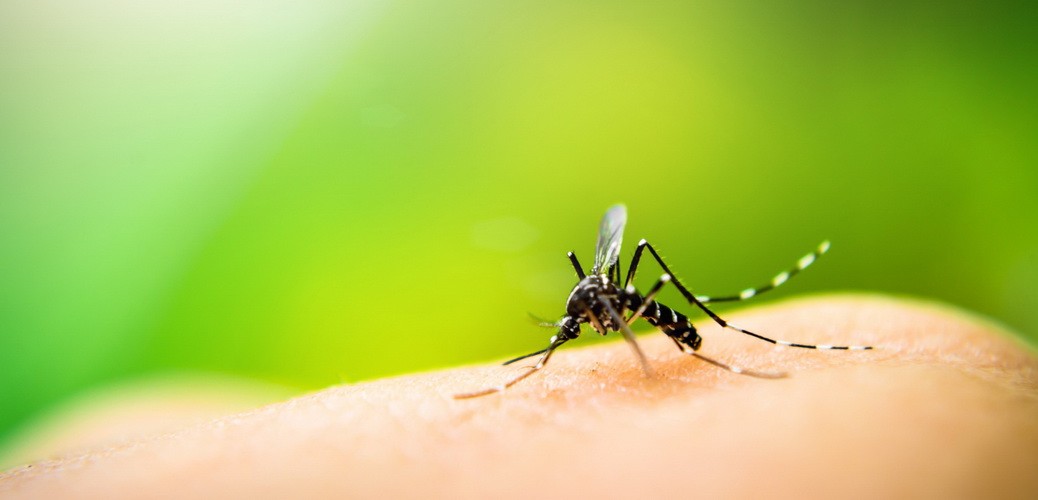
The best mosquito repellent for Mexico
The best mosquito protection For Mexico and the CaribbeanThe best mosquito protection for Mexico and the CaribbeanThe vacation is booked - off to Mexico and the Caribbean. The anticipation of balmy summer nights, tropical rainforests and dream beaches rises!!! If only...
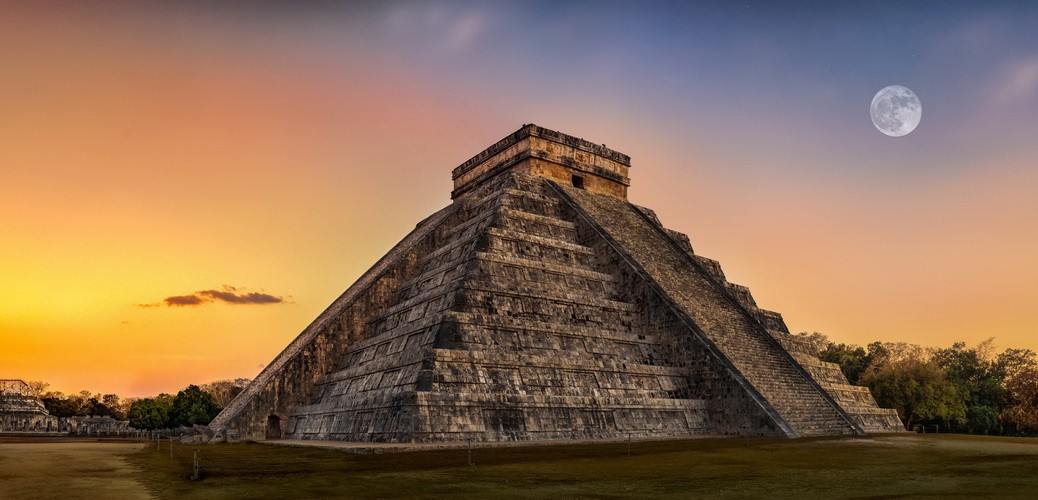
Chichen Itza Travel Guide
Travel Guide Chichen Itza History | Arquitecture | Insider TippsChichen Itza: Travel Guide into the Mayan WorldIt is a once in a lifetime opportunity to see the famous Mayan ruins of Chichen Itza. For many visitors, the culture of ancient Mexico has so much...
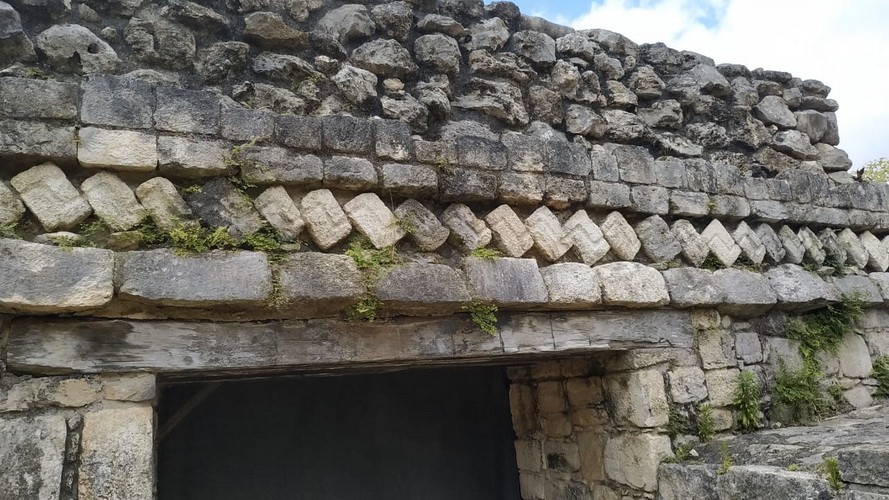
Private Excursions Riviera Maya
Riviera Maya Private Excursions Certified Guides | Personal Support | Pick upPlaya del Carmen: Private Excursions Riviera MayaTreat yourself in a very special way - discover the Riviera Maya with our Riviera Maya private excursions. Our certified tour guides will show...

